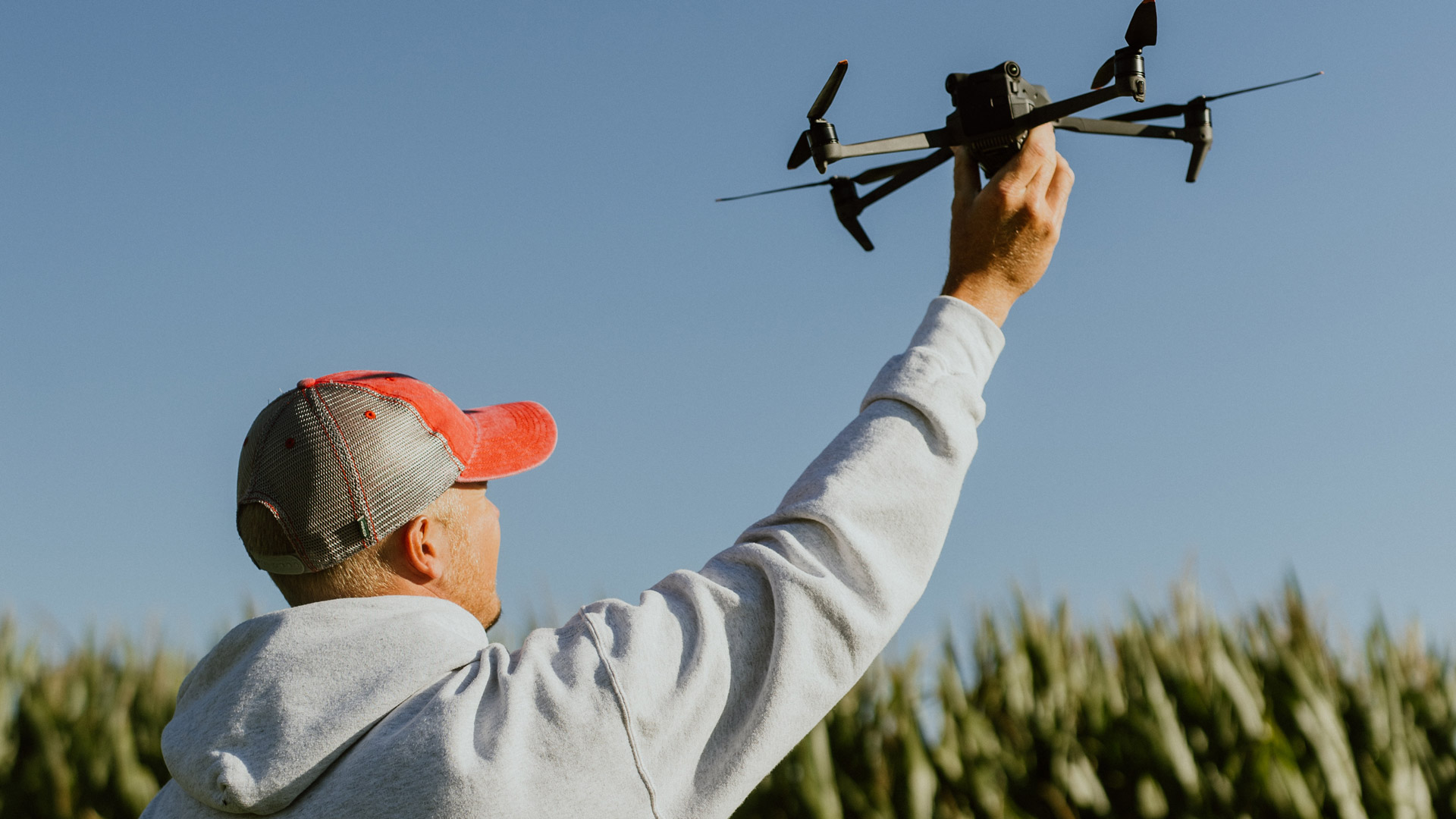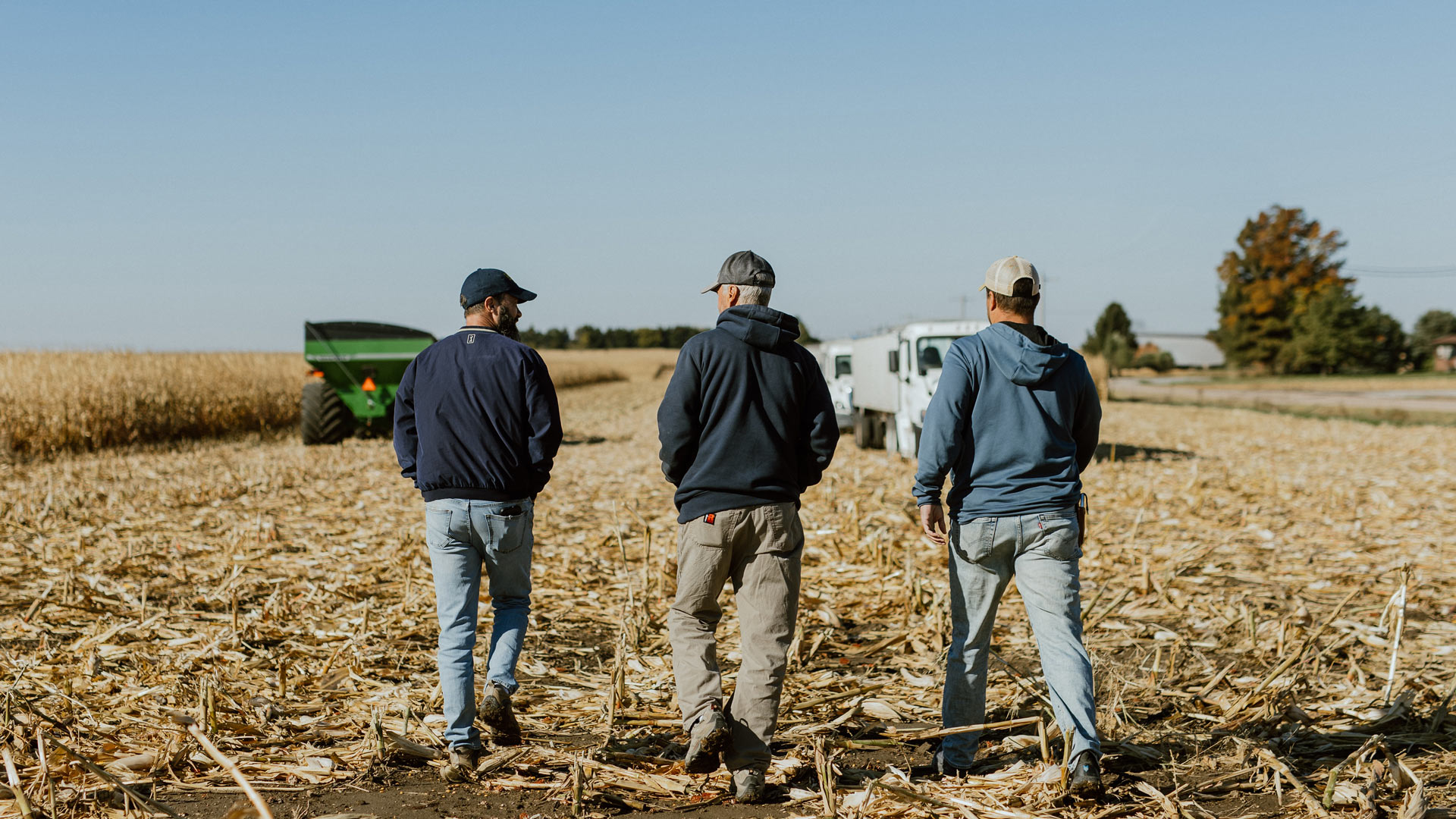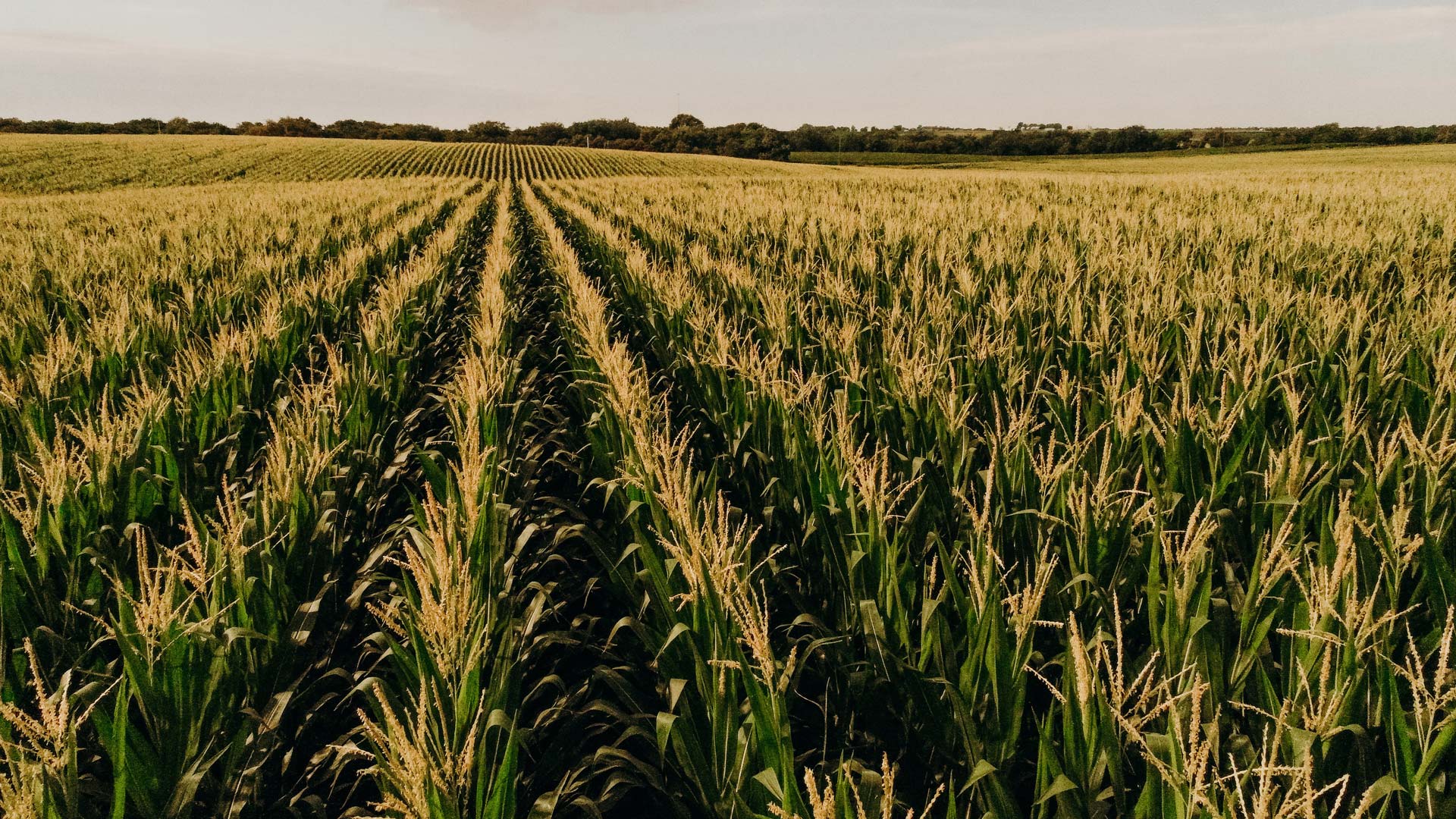Nebraska corn farmers use a range of specialized equipment to grow their crops and care for the land. Tractors equipped with GPS technology enable precise planting and field mapping, ensuring efficient use of resources. Additionally, planters and combines are designed to maximize yields while minimizing soil disturbance.
While some associate farming with large equipment, today’s corn farmers also use a high-tech tools and equipment to optimize crop production, quality and soil health.
To learn more about how today’s corn farmers use equipment and technology, we talked to Nebraska Corn Board member John Krohn, a fifth-generation farmer who grows corn with his family near Albion, Nebraska.
No-Till Corn Farming: No Plow Needed.
While Krohn has a wide variety of equipment on his farm, one piece of equipment he does not have is a plow. That’s because he uses a method of farming called no-till farming. That means he does not plow his fields before or after harvest, as some farmers do.
Nebraska corn farmers lead the nation in no-till farming. This practice promotes soil health, increasing water absorption and carbon sequestration. It also helps reduce soil erosion.
“I believe I’m building soil structure and over the long term, improve my land, by implementing no till and specifically planting cover crops too,” said Krohn, who implemented no-till farming about 20 years ago. “So, I really don’t have any tillage equipment.”
The Corn Planter: A Critically Important Piece of Farm Equipment
While all equipment used for farming plays an important role, Krohn says his planter is critically important. Used to plant his crops, the planter places seeds in the ground while being pulled along the field behind a tractor. Because Krohn is growing corn using no-till practices, his planter has blades that make a small slice into the soil so a seed can be placed into the soil. The planter also covers the newly planted seed with soil without disturbing the surrounding soil.
How does someone learn to drive a tractor or combine? Krohn learned by helping at the family farm, which he started doing at a young age. A special license isn’t required to drive a tractor, although certification courses are offered for 14-year-olds and 15-year-olds.
Watering the Crop: Irrigation
An important part of Krohn’s operation is irrigation. He uses center-pivot irrigation, which consists of a long, elevated pipe with sprinkler heads dangling underneath. The pipe is mounted on wheels, and waters different parts of the field by pivoting around a center point. It delivers precise amounts of water to the crop, and nutrients also can be added to the water to feed the crop.
While the irrigation system is designed to roll over top of the field surface, sometimes it leaves deeper tracks. When that happens, Krohn drags a pivot track closer behind a tractor to smooth over any ruts left behind. This ensures that when he harvests the crop, the combine can get through easier.
Combining Corn During Harvest
Corn is harvested with a combine. Corn harvesting involves using a combine to cut and process the cornstalks, separating the valuable kernels from the rest of the plant material, known as chaff. The combine retains the kernels, while the chaff is expelled out the back and returned to the field. The harvested kernels are then transferred from the combine into waiting vehicles, such as trucks or wagons, for transportation to local elevators or bins at home. As farming technology has advanced, many combines have GPS-guided navigation systems. This enables farmers to plant and harvest with extreme accuracy— closely tracking their yield— and use precise amounts of nutrients to feed the crop.
Running the planter used to be Krohn’s favorite activity, but he now prefers harvesting corn. That’s because planting corn forces Krohn to wait a few weeks for the seedlings to sprout and show whether he did a good job planting them in neat, tidy rows, while harvesting provides gratification of the work he has completed over several months. Often, his dad will run the combine, and Krohn will haul corn out of the field or move irrigation equipment out of the way.
“I think about it in terms of bushels— it’s literally dollars coming in,” he said. “As soon as you get done harvesting, you know that you did it, you know that it was good and there’s not that lag.”
Transportation and Storage Equipment for Corn Farming
Once the corn is collected inside the combine, it gets moved to waiting grain carts or tractor-trailer rigs. Krohn uses a semitrailer and grain carts to haul his corn from the field to market or storage.
Corn storage equipment
Corn that isn’t sold right after harvest often needs to be stored in a dry, secure place. Krohn uses grain bins—large circular metal structures—to store the grain on his facility. Because grain enters the bins at the top of the structures, Krohn uses special machinery to hoist the corn kernels high into the air into the bin. The two types of grain-handling equipment he uses to do this are grain augers and a grain leg:
- A grain auger is a long metal tube mounted on wheels. Krohn dumps corn into the auger, which uses a piece of spinning metal inside the tube to draw the corn through it. Once the corn is at the top of the tube, it is discharged into the grain leg.
- A grain leg is a permanent metal structure built near the grain bins. A large belt studded with cups or buckets runs vertically inside the grain leg. Grain is scooped into the cups at the bottom of the grain leg and the belt, which then pulls the cups filled with corn up to the top of the grain leg.
If the corn kernels contain too much moisture, they must be dried before being stored for long periods of time. Krohn dries corn with a grain dryer, which uses hot air to dry the kernels to the ideal moisture level of 15%.
“The grain leg lifts [the corn] up in the air about 100 feet, and then it uses gravity to either go into the grain dryer or into the bins that are about 60 feet tall,” he said.
Post-harvest/field care equipment
After corn is harvested, Krohn uses a variety of tools and equipment to care for his fields and prepare them for next year’s planting season. One of the main tools is a soil probe, which Krohn uses to take one-inch –by six-inch soil samples from his fields. The samples can be tested for nutrient levels, moisture levels and other indicators of soil health. This helps Krohn determine if his soil needs additional nutrients or has other needs that should be addressed.
He also uses a tool called an air seeder to plant cover crops, often cereal rye, to increase the amount of organic matter in the soil, reduce weed growth and prevent erosion. Just as the name implies, an air seeder uses air to blow the seeds onto the ground.
This is just some of the many types of equipment farmers use to raise healthy corn while also taking care of the land they value so deeply.




